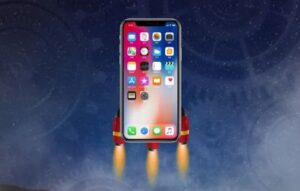Impact of artificial intelligence on animation
The artificial intelligence It is revolutionizing animation, transforming both the technique and the way visual stories are created. This change has a profound impact on every phase of the creative process.
The adoption of smart tools It allows you to automate repetitive tasks, speed up production times, and open up new creative possibilities for animators and studios with different technical levels.
Automation and new digital tools
Technologies such as Runway ML and Ebsynth facilitate automation in 2D and 3D animation, significantly reducing the time needed to design and animate complex characters and environments.
These platforms not only accelerate production, but also enhance creation by enabling the automatic generation of specific behaviors and details through advanced algorithms.
Furthermore, the accessibility of these tools is democratizing the creative process, allowing users without advanced technical knowledge to create quality animations.
Transformation of the animator's role
The role of the animator is being redefined, moving from manually executing every detail to directing the creativity of intelligent systems that automate mechanical tasks.
Automation frees up time for animators to focus on more innovative and personalized aspects, raising the narrative and visual quality of projects.
Far from supplanting, AI enhances human ingenuity by allowing artists to become architects of more complex and exciting experiences.
Innovations in animation formats
Animation formats are undergoing rapid evolution with the inclusion of modern techniques that combine art and technology. This is redefining visual and narrative impact across various platforms.
Among these formats, motion graphics, procedural animation, and virtual cinema stand out for offering new experiences, from dynamic content to total immersion, revolutionizing the way visual stories are told.
These innovations also facilitate more efficient and creative productions, marking a dramatic change in the industry that is betting on more adaptive and immersive formats for today's audience.
Growth of motion graphics
Motion graphics have gained prominence by combining animated graphics with audiovisual techniques to deliver clear and engaging messages in short periods.
This format is especially valued in marketing, social media, and education, where speed and visual impact are key to capturing the public's attention.
Furthermore, motion graphics leverage the power of artificial intelligence to create smoother and more personalized animations, facilitating the production of high-quality content.
Procedural animation and its applications
Procedural animation uses algorithms to automatically generate movements and effects, which speeds up processes and improves the visual complexity of animated scenes.
Thanks to the incorporation of AI, this technique can simulate crowds, natural behaviors, and environmental effects in real time with greater accuracy and realism.
Its application ranges from video games to film, allowing dynamic scenarios that respond to external variables without the need for constant manual animation.
Impact on production
Procedural animation reduces costs and time, allowing creators to focus on creativity and the constant improvement of visual storytelling.
Expansion of virtual cinema
Virtual cinema is transforming the viewer experience by allowing immersion and interaction in animated stories through augmented and virtual reality.
This innovative way of telling stories offers participatory environments where the audience can influence characters and settings, creating a more personal and immersive narrative.
With the support of cloud computing, virtual cinema promises to grow exponentially, reshaping the economy and expectations of audiovisual entertainment.
Challenges and adaptations in the industry
The emergence of artificial intelligence in animation poses significant challenges that require a rebalancing between human creativity and automation.
Creators must adapt their methodologies to integrate new technological tools without losing the artistic essence that characterizes their work.
Rebalancing human creativity and automation
Automation streamlines processes, but it also generates debates about the impact on authentic creativity and the artistic identity of animators.
It is essential to achieve a balance where AI enhances human ideas and skills without replacing them, preserving the originality of each work.
This rebalancing requires reflection and responsibility, so that technology becomes an ally that expands creative possibilities, not a limitation.
New roles and methodologies for creators
Animators are taking on new roles as intelligent systems directors, transforming their focus towards creative and strategic oversight.
Hybrid methodologies are emerging that combine traditional techniques with automated processes, fostering dynamically integrated collaboration.
This change opens up opportunities for creators to innovate and personalize their projects, adapting to the demands of a constantly evolving market.
Trends for the future of animation
The future of animation is shaping up to be a mix of art, artificial intelligence and immersive technologiescreating innovative and profound visual experiences.
These trends promise to transform not only production, but also the way audiences engage with and interact with animated stories.
A fusion of art, AI, and immersive technologies
The union of human creativity and artificial intelligence It facilitates the creation of richer and more detailed animated worlds, with accelerated processes and greater artistic freedom.
Technologies such as augmented and virtual reality drive new forms of immersion, taking animation beyond the traditional screen into multisensory experiences.
This fusion democratizes animation, allowing creators of all levels to design amazing content with the support of intelligent systems and virtual environments.
Personalized and participatory visual experiences
The future points to user-adapted visual experiences, where the personalization and interaction Through narrative, they become protagonists.
Viewers can shape animated stories and environments, making each experience unique and participatory, revolutionizing traditional consumption.
This trend fosters a stronger bond between audience and creator, giving rise to dynamic narratives that respond to individual choices and preferences.






